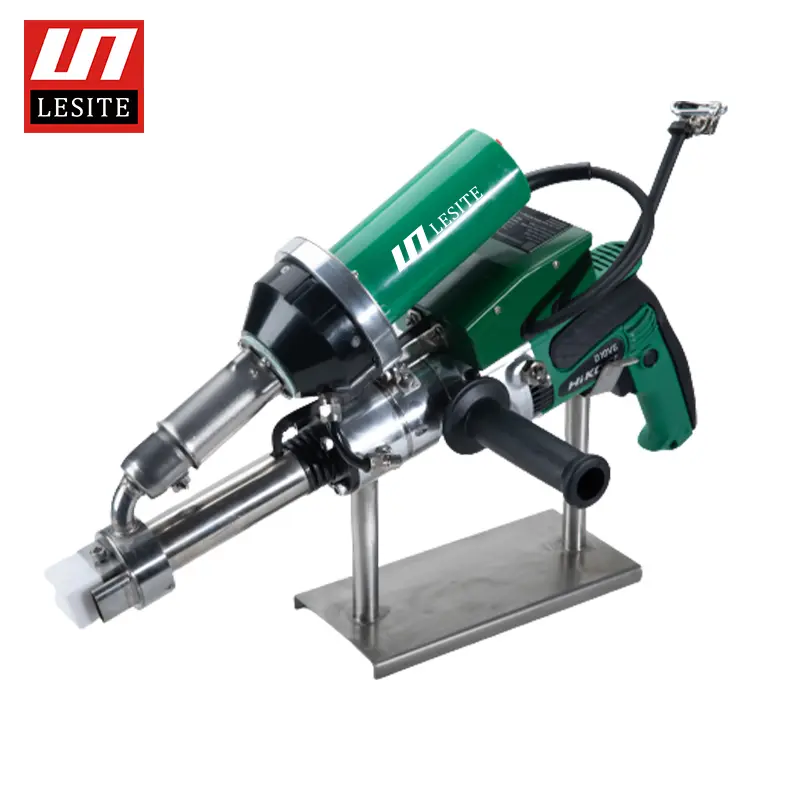You can weld plastic using a plastic welding kit, which typically includes a welding gun, welding rods, and a heat source. There are different methods of plastic welding, such as hot air welding, extrusion welding, and ultrasonic welding. LESITE Plastic extrusion welder gun is the first in China to provide functions such as dual independent heating of base material and welding rod, digital temperature control display, 360-degree rotating welding nozzle, and motor cold start protection.
Using Japanese Hikoki electric drill as the extrusion motor, the machine is small and exquisite, the operation is convenient, the performance is stable, and it can be continuously welded. It is suitable for the welding of PE, PP plastics. The intelligent control system adopts double protection, the cold start protection of the driving motor and the automatic compensation of the heating temperature to improve the reliability of the use of the extrusion welding torch, to avoid the fault caused by misoperation to the equipment as far as possible, and extend the service life of the machine.
A plastic extrusion welder works by using a combination of heat and pressure to melt and fuse thermoplastic materials together. Here are the basic steps involved in the extrusion welding process:
Preparation: The surfaces of the materials to be welded are cleaned and prepared to ensure proper adhesion.
Heating: The plastic extrusion welder heats a welding rod made of the same plastic material as the workpieces. The rod is softened and partially melted to form a molten mass.
Extrusion: The softened welding rod is forced out through a nozzle or welding tip, creating a molten bead of plastic along the seam to be welded.
Welding: The molten bead is pressed into the joint between the workpieces, creating a strong fusion as it cools and solidifies.
The heat and pressure applied by the welding gun allow the molten plastic to bond with the workpieces, effectively creating a seamless joint. This process is commonly used in various industries for creating watertight seals, repairing plastic components, and fabricating plastic structures.
Post time: Dec-05-2023

